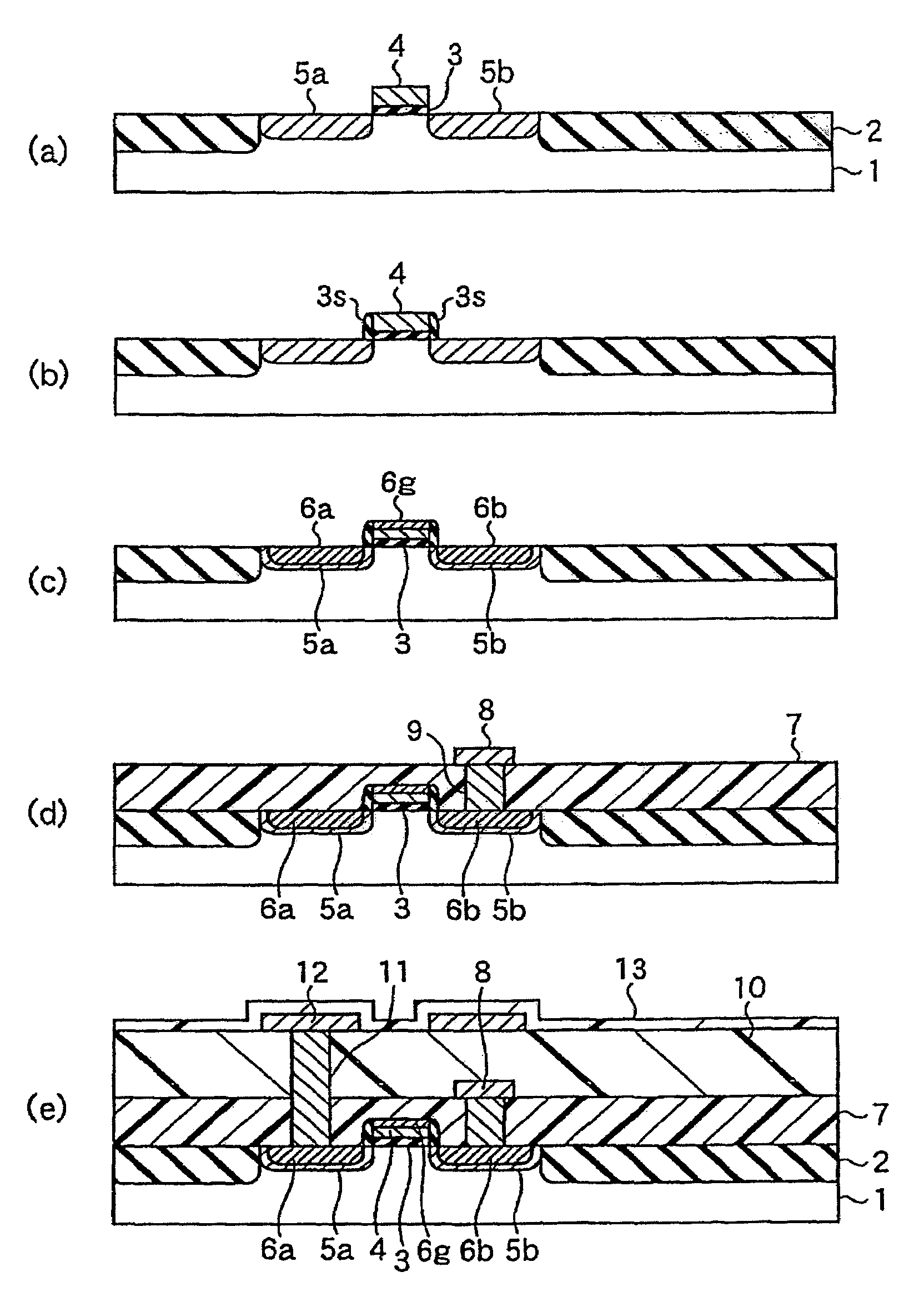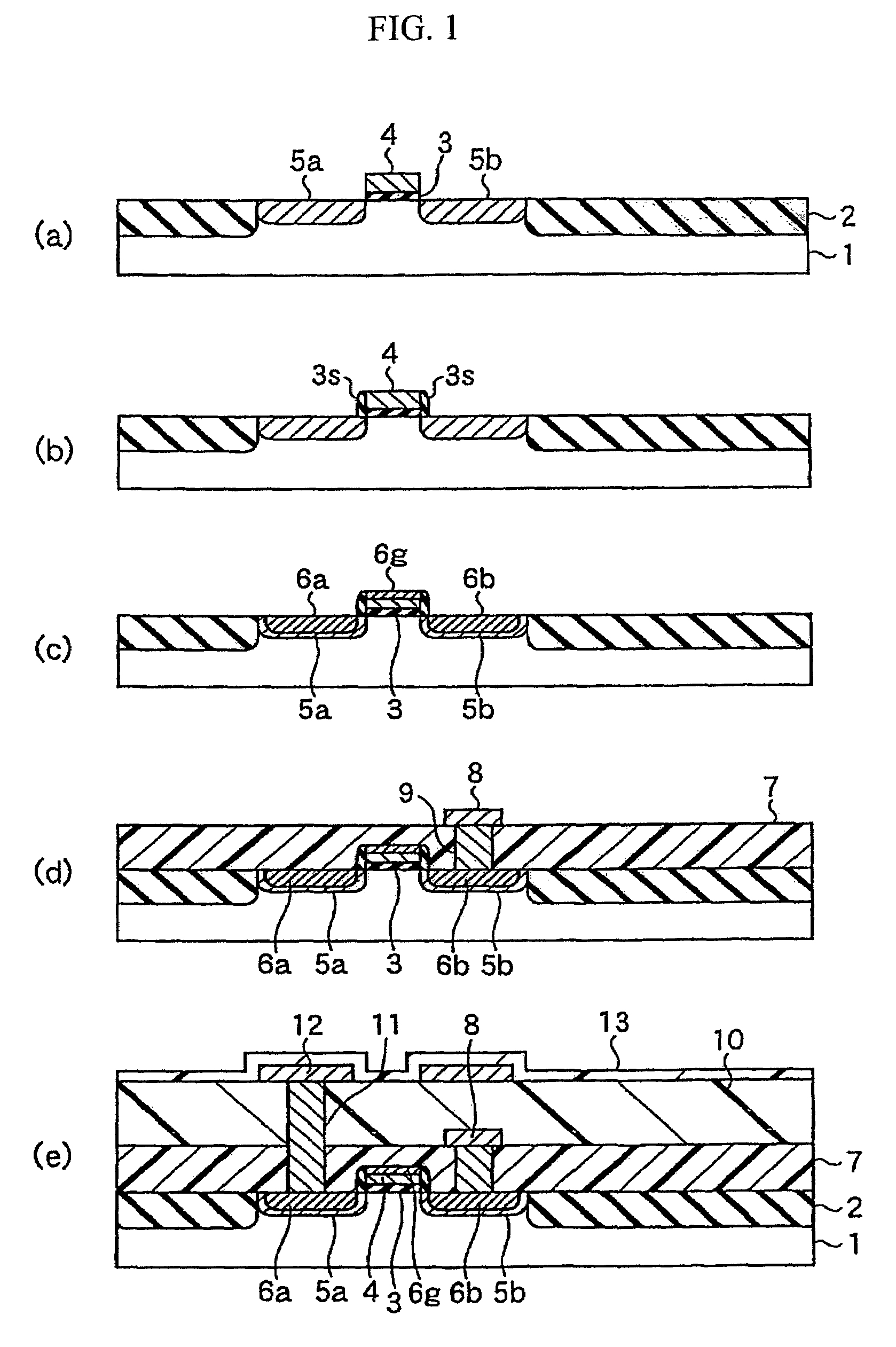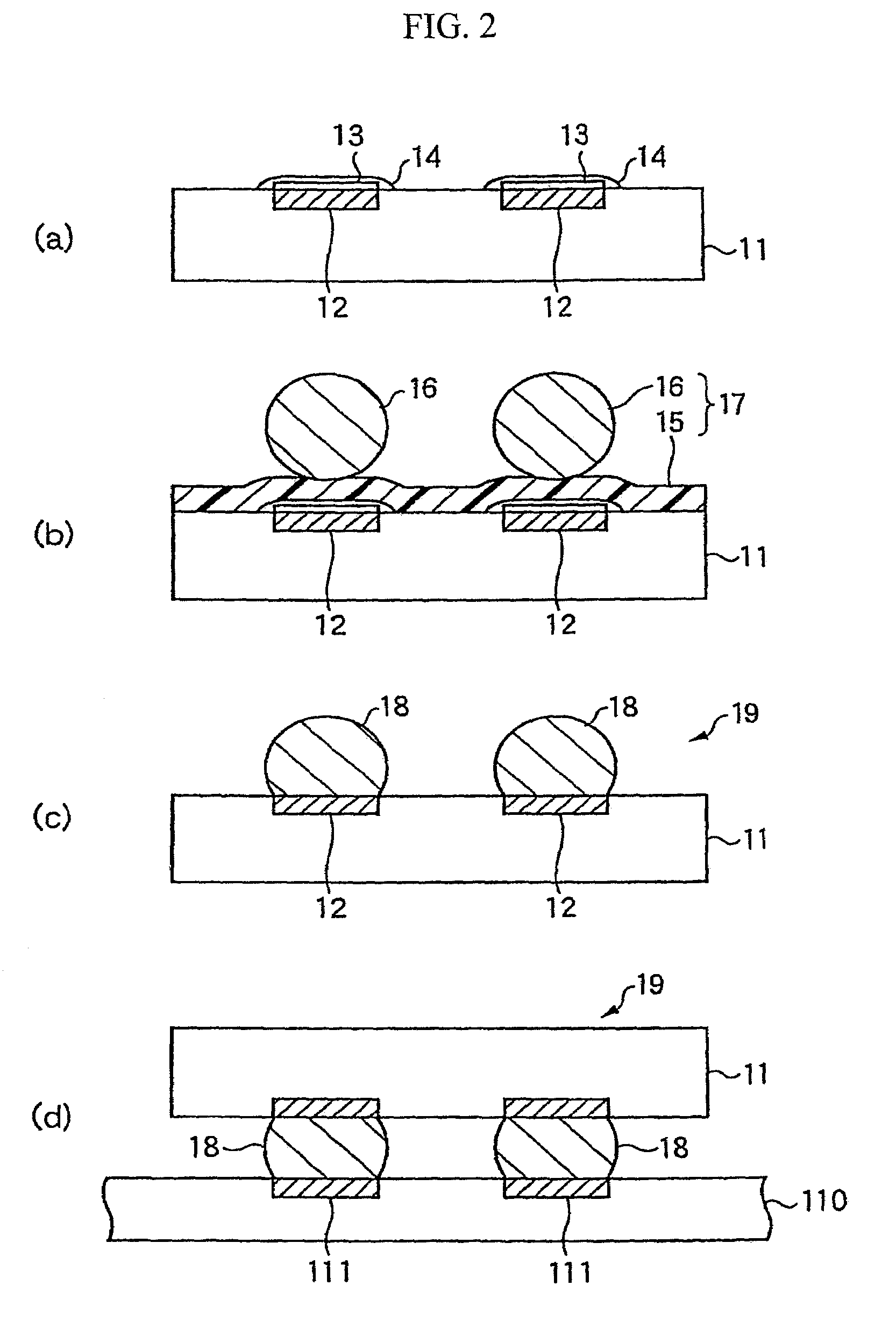Heat-decaying materials, transfer sheet using the same, and patterning method
a technology of heat-decaying materials and transfer sheets, applied in the direction of film/foil adhesives, conductive layers on insulating supports, thermography, etc., can solve the problems of difficult peeling of materials, limited adhesive force that may be reduced, and inability to recycle dismantled structures, etc., to achieve high positional accuracy, high producibility, and high accuracy
- Summary
- Abstract
- Description
- Claims
- Application Information
AI Technical Summary
Benefits of technology
Problems solved by technology
Method used
Image
Examples
embodiment 1
of Conductive Particles Transfer Sheet
[0392]Embodiment 1 of the conductive particles transfer sheet that comprises the heat-decaying material of the invention is described with reference to FIG. 2. FIG. 2 includes cross-sectional views of a process scheme of forming solder ball bumps for BGA package and connecting them to a mother board, wiring board by the use of the above-mentioned conductive particles transfer sheet. In this, semiconductor chips are mounted on the BGA package.
[0393]As in FIG. 2(a), an antioxidant layer 13 is formed of Au foil or the like on the Cu wiring layer 12 formed in a BGA package 11, and a flux 14 is applied to the antioxidant layer 13 to cover it. Next, as in FIG. 2(b), a conductive particles transfer sheet 17 that comprises a heat-decaying adhesive sheet 15 and solder balls 16 adhered to predetermined regions of the surface thereof is laminated onto the BGA package 11 while the position of the Cu wiring layer 12 of the BGA package 11 is aligned with that...
embodiment 2
of Conductive Particles Transfer Sheet
[0397]Embodiment 2, a modification of Embodiment 1 of the conductive particles transfer sheet is described with reference to FIG. 3 and FIG. 4. In these drawings, the same parts as those in FIG. 2 are indicated by the same reference numerals. The difference between Embodiment 2 and Embodiment 1 is that, in Embodiment 2, the solder balls 16 are embedded into the heat-decaying adhesive sheet 15 and is adhered and positioned therein in the conductive particles transfer sheet 17 described in FIG. 2(b).
[0398]First described in the conductive particles transfer sheet 17 to be used in Embodiment 2 of the conductive particles transfer sheet with reference to FIG. 3. FIG. 3(a) is a plan view of the conductive particles transfer sheet 17; and FIG. 3(b) is a cross-sectional view of FIG. 3(a) cut along X1-X2. As in FIG. 3(a), a large number of solder balls 16 are disposed in the heat-decaying adhesive sheet 15. The solder balls 16 are embedded and fitted in...
embodiment 3
of Conductive Particles Transfer Sheet
[0402]Embodiment 3, still another example of the invention is described with reference to FIG. 5. FIG. 5 includes cross-sectional views of a process scheme of forming bumps on the surface of a semiconductor chip or semiconductor wafer.
[0403]As in FIG. 5(a), a passivation film 122 of a silicon nitride or silicon oxynitride film is formed on the surface of a 8-inchφ semiconductor wafer 121 with semiconductor elements and internal wiring (not shown) formed thereon, and an outer lead wiring 123 is formed on it. The outer lead wiring 123 is formed of aluminium (Al) metal or Cu.
[0404]Then, as in FIG. 5(b), a coating solution that contains a composition of a liquid heat-decaying adhesive resin is applied onto the passivation film 122 and the outer lead wiring 123 on the surface of the semiconductor wafer 121, in a mode of spin-coating. Then, this is baked at 80° C. or so to thereby form a heat-decaying adhesive resin layer 124 thereon. In this, the hea...
PUM
| Property | Measurement | Unit |
|---|---|---|
| temperature | aaaaa | aaaaa |
| temperature | aaaaa | aaaaa |
| temperature | aaaaa | aaaaa |
Abstract
Description
Claims
Application Information
 Login to View More
Login to View More - R&D
- Intellectual Property
- Life Sciences
- Materials
- Tech Scout
- Unparalleled Data Quality
- Higher Quality Content
- 60% Fewer Hallucinations
Browse by: Latest US Patents, China's latest patents, Technical Efficacy Thesaurus, Application Domain, Technology Topic, Popular Technical Reports.
© 2025 PatSnap. All rights reserved.Legal|Privacy policy|Modern Slavery Act Transparency Statement|Sitemap|About US| Contact US: help@patsnap.com



